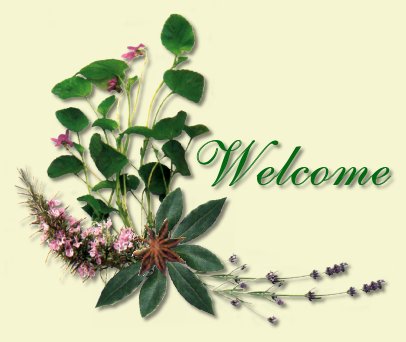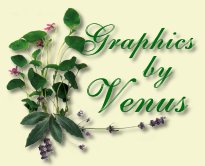|

The use of plants and herbs as cosmetic materials has it's roots in all ancient cultures. Egyptians incorporated beauty preparations in their religious and ceremonial rituals. Ancient Greeks developed a belief in health and beauty not uncommon from our own modern beliefs. Romans indulged in aromatic rituals and body pampering. In fact, a Roman writer of the first century, Citro, produced four books on cosmetics! Included in his books were a reange of recipes for hair care, avoiding wrinkles and illiminating body odors. Our Ancestors of the Renaissance were aware of skin care being seperate from medicinal care. Recipes for soaps, creams and herbal waters were collected, recorded and handed down from mother to daughter for generations. During the 19th Century, beauty aids became industialized. Mr. T.T. Pond offered his "Pond's Extract" to the public and other manufacturers followed quickly behind. Soon the innovation of preservatives worked it's way into the industry and mass production created an overwhelming choice for consumers.

Today's commercial products are expensive, notto mention the fact that testing can involve cruelty to animals! Along with these worries are the increased allerfic reactions to the chemical preservatives, synthetic perfumes and artificial colorings used by manufacturers. While some companies have rushed to create their own ranges of herbal cosmetics, use of preservatives still prevails. Making your own lotions, creams, toothpaste and hair rinse is much more practical. You are in control of the ingrediants and can reduce, substitue or illiminate any one that is the culprit.

Before using an herbal preparations, you are strongly advised to sample a small amount first. Especially if you have had a reaction in the past. To do this, use a bandaid and 4 of the ingredients. Place a small amount of each ingredient on the gauze area of the bandaid. Place the bandaid on your inner arm between the wrist and elbow. Leave it there for 24 hours, which is ample time for any reaction to show up.

Below are some basics to get you started with using herbs for your bath and toiletries. The equipment you need is probably already in your kitchen. I will warn you though, don't use aluminum pots for your infusions and decoctions, as it has properties that could alter the outcome. Also, if you have hard water, it is a good practice to buy distilled water for your herbal needs, as the lime in the water prevents the entire breakdown of the herbs properties.

Basic Herbal Preparations Infusion:
Put one and a half handfuls of fresh herbs or 1 oz. dried into a heatproof container. Bring 2 1/2 cups distilled water to a boil. Pour over the herb immediately and cover. Steep for 30 minutes. Strain and store in a refrigerator for up to three days. | Macerating:
Use this method for herbs likely to lose some of their therapeutic value if heated. pack a glass jar with the crused, fresh herb. Cover with vegetable oil, cider vinegar or pure alcohol. Seal and leave for 2 weeks, shaking the jar each day. Strain and top fill again with fresh herbs. Repeat until the liquid smells strongly of the herb used. Strain, bottle and seal. keeps well and retains it's scent. | Decocting:
This method is used for the tough parts of herbs. Put 1 oz. of the herb into a saucepan. Add 2 1/2 cups distilled water, bring to a boil and simmer for 30 minutes. If more than half the liquid has evaporated, fill up with water to make 1 1/4 cups. Cool, strain and bottle. Keep in the refrigerator and use within a few days. | Pulverizing:
Grind, bruise or mash plant fibers and seeds, using either a pestle and morar or a blender. |
The Plants and Herbs listed below are some of what can be used. With each preparation and use, according to your likes and outcome of use, you will find yourself adding to the list. Each person is different and may require different types of creams and lotions throughout the lifetime as your body changes and ages.
Plants to Use in Creams and Lotions Aloe Vera
The sap from the leaves is soothing and healing.
Avocado
An excellent skin food with high vitamin E and A content.
Borage
Good for dry, sensitive skins.
Calendula
A healing herb for rough or problem skin.
Chamomile
A gentle, soothing herb that also softens and whitens skin.
Comfrey
A healing and soothing herb that contains allantoin, a protein which speeds up cell renewal. Good for rough and damaged skin.
Cucmber
A cleansing agent and toner. Soothing and healing.
Dandelion
Contains a rich emollient useful in cleansing lotions for dry, sallow skin.
Elderflower
A good tonic for all skins. Reputed to soften skin and smooth wrinkles, fade freckles and soothe sunburn.
Essential oils
These are excellent additions to creams and lotions.
| Fennel
Cleansing and soothing. Add crushed seeds to face packs. Purifies oily skin.
Hens and Chicks
A healing and soothing herb especially good for dry, sensitive skin.
Ivy
Relieves sunburn; helps to disperse trapped fluids and toxins in the fight against cellulite.
Lady's Mantle
A healing herb for soothing dry, sensitive skin; a good astringent for large pores.
Lavender
A gentle cleanser and tonic for all skin types.
Lemon
An astringent that restores the skin's natural acid balance.
Linden tree blossom
Softens the skin. Deep cleansing.
Lupin seed
A cleanser and pore refiner for oily skin.
Marsh mallow
A healing softener for dry skin, chapped hands and sunburn.
Nettle
A deep cleanser; very good for oily skin.
| Orange flower
An excellent skin tonic, said to help restore the skin's acid barrier. Also treats dry skin and broken capillaries and stimultes cell replacement.
Parsley
A conditioner for dry, sensitive and troubled skin.
Peppermint
An astringent which clears the complexion.
Rose
A soothing and gentle cleanser which has a softening effect on the skin.
Rosemary
An invigorating antiseptic which boosts circulation and deep cleansing.
Sage
A cleansing, stimulating astringent which tightens pores.
Thyme
A stimulating but gentle antisptic cleanser.
Violet
A gentle astringent.
Watercress
Expressed juice can help to clear blemishes.
Witch hazel
Soothing and astringent.
Yarrow
A healing and cleansing astringent. Good for oily skin.
|

If you don't already know what type of skin you have, determine your type with this test.
Clean your face thoroughly, then rinse well and pat dry. Allow it to rest for 2 hours and then press a tissue onto your face. If the tissue comes away full of grease, you have oily skin; if there is grease on only parts of it, you have combination skin. If the tissue comes away unmarked, wash your face with soap and water. If your skin feels supple and smooth afterwards, it's normal; if it feels taut, it's dry. Following are recipes for each skin type.
Normal Skin
Soft and translucent, normal skin requires only a simple care routine.
Dry Skin
Taut and dry and with no shine, dry skin requires moisturizer at an earlier age. It should be treated with mild cleansers and with gentle care to avoid further drying of the skin.
Oily Skin
This has a definite shine and is supple. The pores are open and the skin may look coarse and sallow. It needs thorough cleansing, but this must be gentle to avoid stimulating the sebacious glands yet further.
Combination Skin
This is the most common skin type with the pores on the forehead, nose and chin larger than those on the rest of the face. This "T" panel is oily and the remainder of the face is dry. It is best treated as two types of skin, Oily and Dry.

Dry Skin Recipes
All Skin Type Recipes
Oily Skin Recipes

 


|






